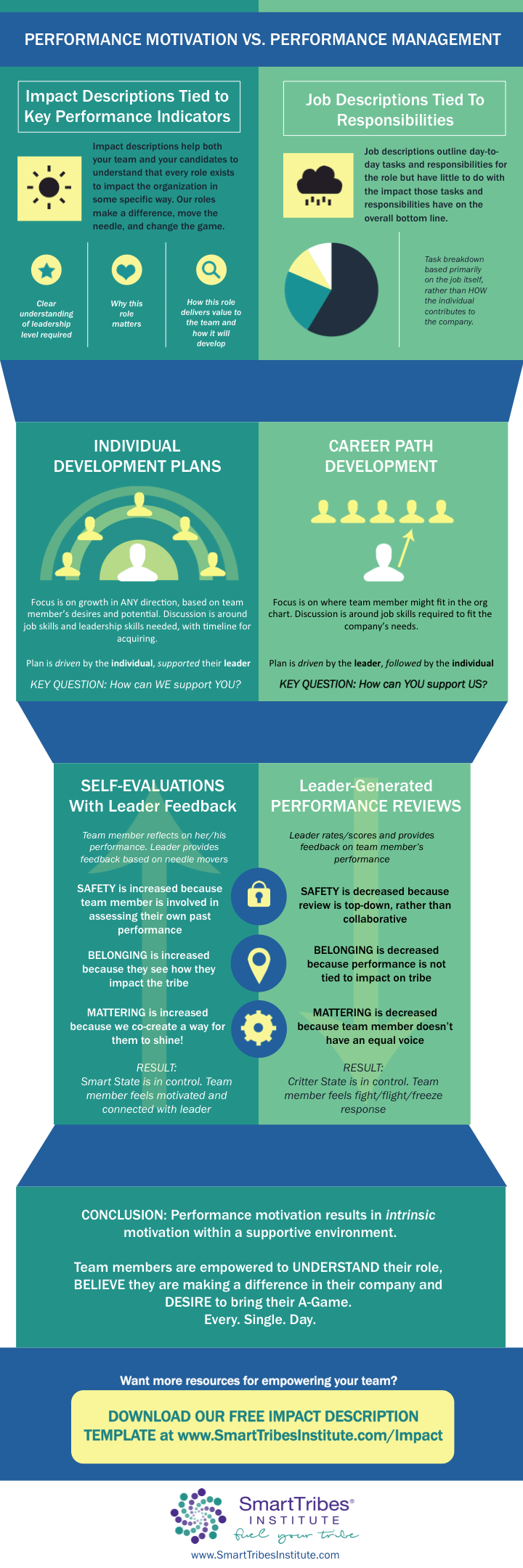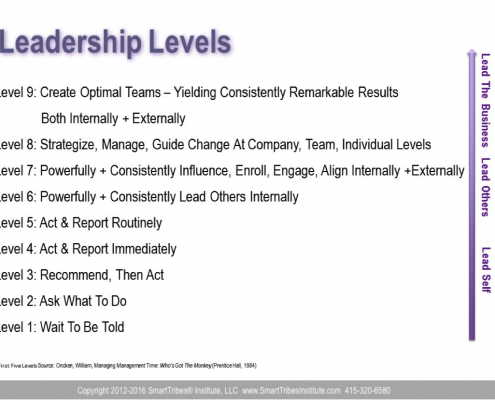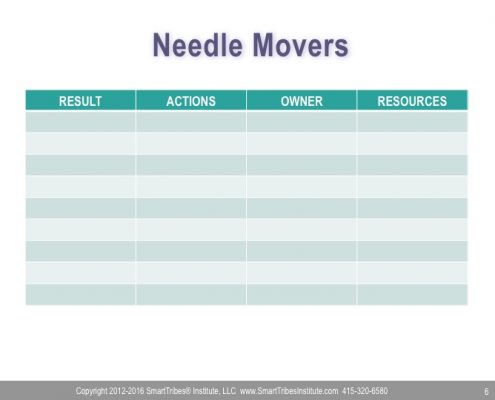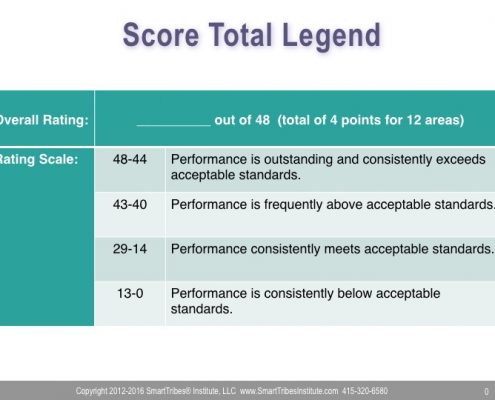
Here are four factors all leaders must have in place to motivate–not manage–team performance.
1. Impact Descriptions—Not Job Descriptions
Motivating performance begins before the job interview.
Impact descriptions help both your team and your candidates to understand that every role exists to impact the organization in some specific way. Our roles make a difference, move the needle, and change the game.
Here are some of the items we recommend including in an impact (formerly known as job) description.

• Who We Are (company mission, vision, values)
• Who You Are (describe who a successful fit is)
• Why This Role Matters (how the role impacts others—both internally and externally)
• Who Your Internal Customers Are And How This Role Delivers Value To Them
• Responsibilities
• Requirements
• Performance Metrics/KPIs/Needle Movers For This Role
• Potential Career Path (possible roles this role could evolve into, job skills and leadership skills)
• Leadership Level of Role (see Leadership Levels graphic)
• Learning and Development Opportunities
• Compensation
Once you have the right person in the right role, they need to understand and agree with what is expected of them. Needle movers take the guessing game out of how high the bar is set.
2. Stay On Track With Clear Needle Movers
Performance motivation does not mean that we throw accountability and goal setting out the window. Goals need to be set, tracked and measured. This is how team members, and their leaders, determine if they are on track or if course correction is needed. Instead of using the term “goals,” I prefer the term “Needle Movers.”
A Needle Mover is a given result that will have a significant impact on the success of your business. What are the three results that will make the greatest difference for you this year? Usually these are people, money, or business model-oriented. You’ll set a target (what you want), minimum (worst case scenario) and mind blower (what will rock your world) for each Needle Mover. Once you set your Needle Movers and follow a plan to achieve them you’ll see daily, weekly, monthly, quarterly and annual results.
Tangible results will increase your momentum. You will have overall annual Needle Movers and then monthly and quarterly ones to support them. Company needle movers are set first. Once you have them you’ll want to enroll your department heads to lay out their Needle Movers to support the company’s Needle Movers. Each individual then creates their Needle Movers to support their departments. We start at the annual needle movers, drill down to quarterly and then on to monthly.
Here’s a template to use to identify and track your needle moving results. Grab a piece of paper and place it lengthwise (or in “landscape” mode if you’re on a PC) and create 4 columns. The first column is labeled results (this is one of your needle movers), the second column is labeled actions (these are the actions to take to achieve the specific needle moving result), the third column is labeled owner(this is the person who is accountable for a given action) and the fourth column is resources (these are the resources such as websites, software, and other tools or people to help an owner complete a given action.)
So, left to right the columns are:

A given result will have usually 3-10 actions, which may have different owners for each action. There may or may not be resources for a given action.
When the Needle Movers are clear, each team member will be motivated to achieve their mind blower because their work and effort is in alignment with the company’s mission, vision, and values and they feel that they are important to the success of the company… because they are.
3. Drive Commitment Through Individual Development Plans (IDPs)
An IDP is not simply a potential career path. An IDP is a commitment from the company to the individual to help them grow, to provide them with new opportunities and challenges. An IDP is also a statement—it tells a person:
• that they are safe here (we are planning their future),
• that they belong here (we are envisioning where they can increase their impact for the tribe),
• that they matter here (we are co-creating a way for them to shine even more brightly)
This is why an IDP is essential, and also why it’s key for it to be co-created with an employee’s leader, and driven forward by the employee themselves. An IDP is an intrinsic motivator—only a person that wants to grow will want an IDP, and they’ll then take it seriously and move it forward to enjoy the many benefits of personal and professional growth. Make sure you let people opt into IDPs. Never make them mandatory—that’ll defeat the purpose.
4. Reflect And Celebrate With Performance Self-Evaluations
Instead of having annual performance reviews (where the leader rates/scores and offers feedback on the team member’s performance), I have found that performance self-evaluations are more effective.
Here is a template that my clients have used, resulting in their team members reflecting honestly on their own performance, taking ownership of their role and rising up to perform better.
Ask the team member to reflect and evaluate their performance in the areas listed below. The scoring system I’ve used is 0-4: 0-Unsatisfactory, 1-Needs Improvement, 2-Satisfactory, 3-Above Average, 4-Exceptional. Remember, they are scoring themselves, so even though we are still using a score to evaluate performance, it’s intrinsic. The leader is there to listen, reflect, offer feedback and help the team member to refine their IDP to help them grow between self-evals. The leader receives the self-eval 1 week before the meeting so they have time to prepare their thoughts.
The team member will evaluate their performance in the last 12-months based on the scale above. They will also provide an example to explain their score and they are encouraged to add additional comments as necessary.
• Customer Service
• Resource Management
• Program Monitoring and Reporting
• Business Development
• Project Management
• Professional Development
• Quality of work accomplished
• Communication (internal/external)
• Leadership/Management
• Initiative/Self-Starter
• Team Work
• Attendance/Punctuality
Open Ended Questions:
• Please copy/paste last year’s Individual Development Plan Goals. Have you met all of your goals? If not, please comment.
• Proposed Individual Development Plan Goals for upcoming year (Productivity/Quality, Lifelong Learning/Professional Education, Relations/Networking/Professionalism)
• Please copy/paste your current Impact Description & Responsibilities. Have you met all of your responsibilities? If not, please comment.
Then the team member will total their score and use this legend to see their self-evaluated results.

It’s empowering to score yourself and see where you need to rise up and celebrate the areas where you excel. The leader’s role throughout this process is to provide feedback, especially if a team member has scored themselves in a manner that isn’t reflected in their Needle Mover attainment.
Needless to say, this is a huge topic. And we’re just getting started on it. All of these tools create an environment of internal and external motivation. This environment allows team members to understand their role, believe they are making a difference in their company and desire to bring their A-Game every single day.






